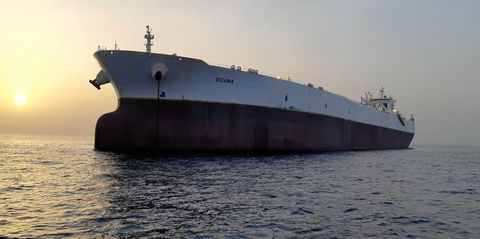VLGC rates continued their astonishing collapse this week, hitting a low not seen for 21 months.
The Baltic Exchange assessed a gas carrier heading from the Middle East Gulf to Asia at just $19,100 per day on Tuesday, down 84% in a month.
Cleaves Securities data shows that the last time rates were this low was in April 2022.
Houston to Japan runs were holding up better at $31,500 per day, off 76% from last month.
This is a staggering decline in what can be a very volatile sector.
Owners were enjoying all-time highs of more than $170,000 per day as little time ago as September.
A weaker price differential between US and Asian gas has been blamed, narrowing the arbitrage window for freight movements.
Clarksons Securities cited data released by the Energy Information Administration on Wednesday showing that US propane and propylene stocks had dropped 8.4m barrels to 67.9m barrels the week before.
This was attributed to strong demand during the recent US storms, combined with lower production in the Midwest and Gulf Coast areas.
Analysts led by Frode Morkedal said gas stocks are below the five-year seasonal average for the first time in more than a year.
Green shoots of recovery?
But there are signs of hope.
“It is worth noting that spot rates out of the US Gulf saw an uptick yesterday,” the analysts added.
The US to Asia price spread has also rebounded slightly, increasing from a low of $184 per tonne a week ago to $203 per tonne on Wednesday, due to gas price movements on both sides of the Pacific.
The forward price assessments translate to earnings of $42,600 per day in February and $50,500 per day in March, according to Clarksons Securities, which assesses non-eco VLGCs at $29,100 on average, plus a scrubber premium of $4,900.
Eco ships were at $31,900, with $4,100 on top for scrubbers.
Cleaves said minimal fixing meant average earnings ended the previous week at $31,000 per day, down 52% over seven days.





